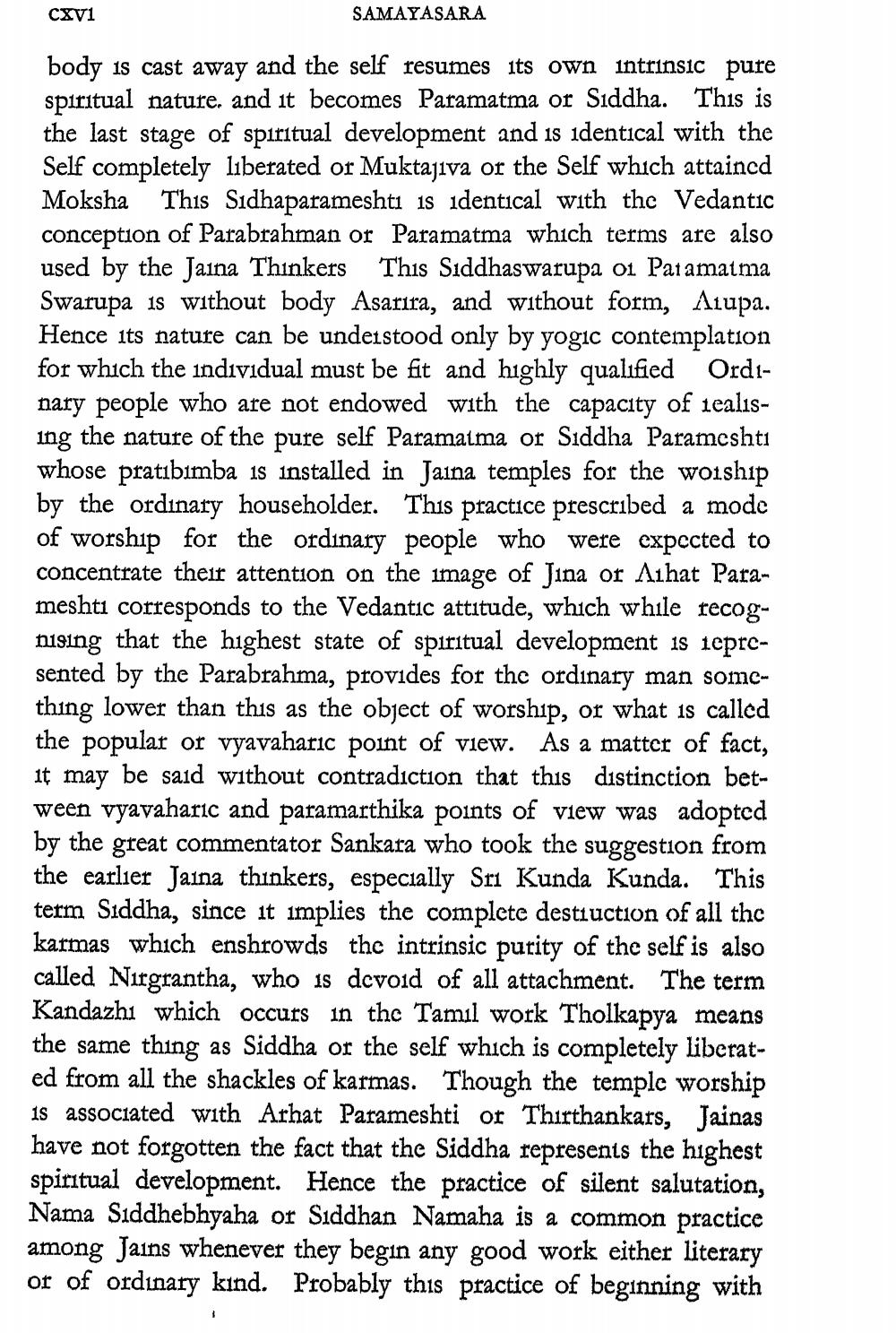________________
cxvi
SAMAYASARA
body is cast away and the self resumes its own intrinsic pure spiritual nature, and it becomes Paramatma or Siddha. This is the last stage of spiritual development and is identical with the Self completely liberated or Muktajiva or the Self which attained Moksha This Sidhaparameshti is identical with the Vedantic conception of Parabrahman or Paramatma which terms are also used by the Jaina Thinkers This Siddhaswarupa 01 Paramatma Swarupa is without body Asarira, and without form, Alupa. Hence its nature can be understood only by yogic contemplation for which the individual must be fit and highly qualified Ordinary people who are not endowed with the capacity of jealising the nature of the pure self Paramatma or Siddha Parameshti whose pratibimba is installed in Jaina temples for the woiship by the ordinary householder. This practice prescribed a mode of worship for the ordinary people who were expected to concentrate their attention on the image of Jina or Alhat Parameshti corresponds to the Vedantic attitude, which while recognising that the highest state of spiritual development is ieprcsented by the Parabrahma, provides for the ordinary man something lower than this as the object of worship, or what is called the popular or vyavaharic point of view. As a matter of fact, it may be said without contradiction that this distinction between vyavaharic and paramarthika points of view was adopted by the great commentator Sankara who took the suggestion from the earlier Jaina thinkers, especially Sri Kunda Kunda. This term Siddha, since it implies the complete destiuction of all the karmas which enshrowds the intrinsic purity of the self is also called Nirgrantha, who is devoid of all attachment. The term Kandazhi which occurs in the Tamil work Tholkapya means the same thing as Siddha or the self which is completely liberated from all the shackles of karmas. Though the temple worship 1s associated with Arhat Parameshti or Thirthankars, Jainas have not forgotten the fact that the Siddha represents the highest spiritual development. Hence the practice of silent salutation, Nama Siddhebhyaha or Siddhan Namaha is a common practice among Jains whenever they begin any good work either literary or of ordinary kind. Probably this practice of beginning with




